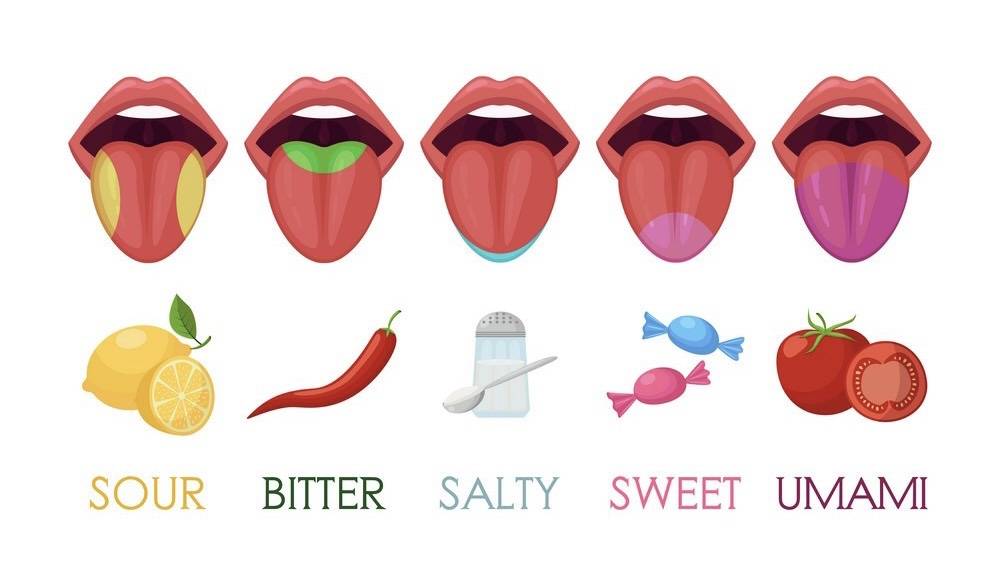TASTE ON TONGUE
The concept of "taste" on the tongue encompasses more than just the basic tastes of sweet, sour, salty, bitter, and umami. It's a bit more complex than that, involving a combination of taste and other sensory factors.
Sweet: This taste is often associated with sugars and sugary foods. It's usually pleasant and can indicate energy-rich foods.
Sour: Sourness is typically associated with acidic substances. Sour tastes can be found in foods like citrus fruits and vinegar.
Salty: Saltiness is the taste associated with sodium ions. It's important for the body's electrolyte balance.
Bitter: Bitterness is often associated with potentially toxic compounds, which is why many people naturally avoid bitter-tasting substances. However, some bitter compounds can also be found in nutritious foods like dark leafy greens.
Umami: Umami is a savory taste that's often described as meaty or brothy. It's associated with the presence of glutamate, which is commonly found in foods like meats, cheeses, and fermented products.
In addition to these basic tastes, other factors contribute to how we experience flavors:
Texture: The texture of food, such as its crunchiness or smoothness, can greatly affect our perception of taste. Think of the difference between a crisp apple and a creamy soup.
Temperature: The temperature of food can impact how we perceive its flavors. Cold foods might seem less flavorful, while warm foods can release aromas that enhance taste.
Aroma: Much of what we perceive as flavor comes from our sense of smell. The aroma of food, detected through our nose, plays a significant role in how we experience taste.
Spiciness: While not a basic taste, the sensation of spiciness comes from compounds like capsaicin in chili peppers. Spiciness doesn't have its taste buds but stimulates pain receptors, creating a unique sensation.
Taste Combinations: The way tastes interact with each other can create complex flavor profiles. For example, sweetness can balance out bitterness, and sourness can complement sweetness.
Cultural and Individual Differences: Taste preferences can vary widely among individuals and cultures. What one person finds delicious, another might find unpalatable.
Habituation and Acquired Tastes: Our tastes can change over time. Foods that were once disliked might become enjoyable through repeated exposure.
Remember that the perception of taste is a multi-sensory experience, involving not just the tongue but also the nose, eyes, and even the brain.
This complexity is what makes the world of food and flavors so fascinating.






















